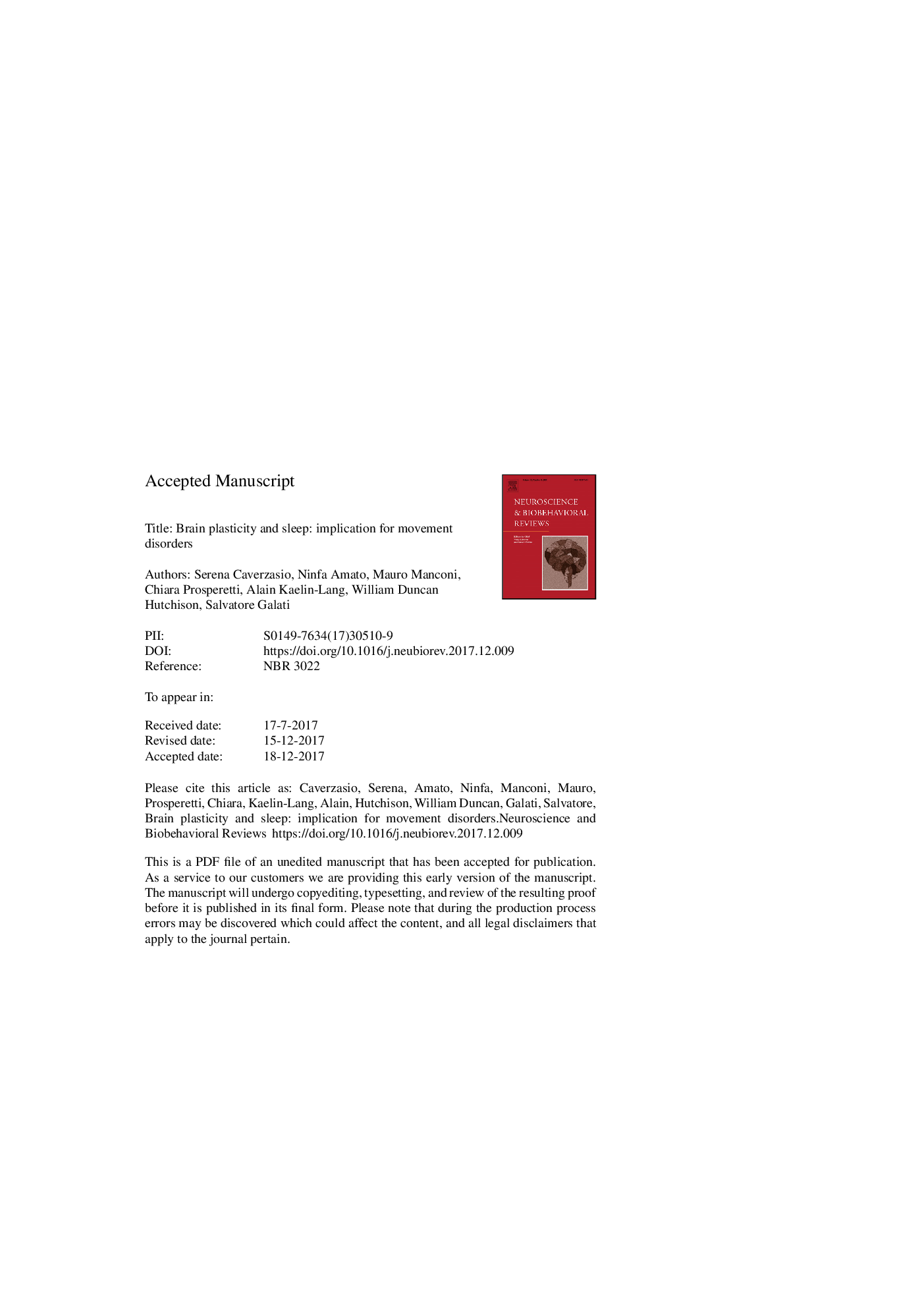| Article ID | Journal | Published Year | Pages | File Type |
|---|---|---|---|---|
| 7302009 | Neuroscience & Biobehavioral Reviews | 2018 | 56 Pages |
Abstract
Brain plasticity is a lifelong process and involves both Hebbian and non-Hebbian synaptic plasticity. The latter, such as intrinsic plasticity and homeostatic synaptic plasticity or synaptic scaling, is thought to counteract Hebbian plasticity, in order to maintain a balanced network. Recent studies support the role of sleep in the regulation of homeostatic synaptic plasticity involved in memory and learning processes. Most evidence focus on the dependence of memory and plasticity in sleep mechanisms. Abnormal brain plasticity during sleep might be implicated in the development of movement disorders, particularly Parkinson's disease (PD) and dystonia. From that, the great interest to understand the underlying process of sleep in relation to movement disorders. The first objective of the review is to summarize the latest knowledge about brain plasticity. The second objective is to analyze the association between sleep, memory and brain plasticity. Finally, the review aims to assess the consequence of abnormal plasticity during PD and dystonia with a viewpoint on the underling pathogenesis of these disorders.
Keywords
DBS6-OHDAPFCLIDTBS6-HydroxydopamineMEPERKSNCRBDSNRASIAMPApKaDTIDARPP-32DRDtDCSNMDAN-methyl-d-aspartateNREMREMSTNMSNRLSGPiSTDPSWSSWAIPSPLFSPLMSFHDTMSrTMSsubstantia nigra pars reticulateCa2+EPSCEPSPinternal globus pallidusMg2+Diffusion tensor MRIPpsREM sleep behavior disordergamma-aminobutyric acidlong-term depressionElectroencephalographyEMGelectromyographyERPMEGHuntington diseaseParkinson’s diseaseParkinson diseaseTranscranial direct current stimulationtheta burst stimulationdeep brain stimulationlow frequency stimulationRepetitive transcranial magnetic stimulationTranscranial magnetic stimulationPaired associative stimulationfMRIfunctional magnetic resonance imaginglong-term potentiationLTPsubstantia nigra pars compactaPositron emission tomographyexcitatory postsynaptic currentrapid eye movementnon-rapid eye movementSleepslow wave sleepCNSdopa-responsive dystoniaDopaminefocal hand dystoniadystoniaLevodopa-induced dyskinesiaSpike timing dependent plasticityrestless legs syndromecentral nervous systemslow wave activityprefrontal cortexLTDSleep deprivationmagnetoencephalographyMagnesiumMotor evoked potentialPASEEGmedium spiny neuronsSubthalamic nucleusPETevent related potentialexcitatory postsynaptic potentialinhibitory postsynaptic potentialprotein phosphatasesprotein kinase ACortical plasticityCalciumSHyextracellular signal-regulated kinaseGABA
Related Topics
Life Sciences
Neuroscience
Behavioral Neuroscience
Authors
Serena Caverzasio, Ninfa Amato, Mauro Manconi, Chiara Prosperetti, Alain Kaelin-Lang, William Duncan Hutchison, Salvatore Galati,
